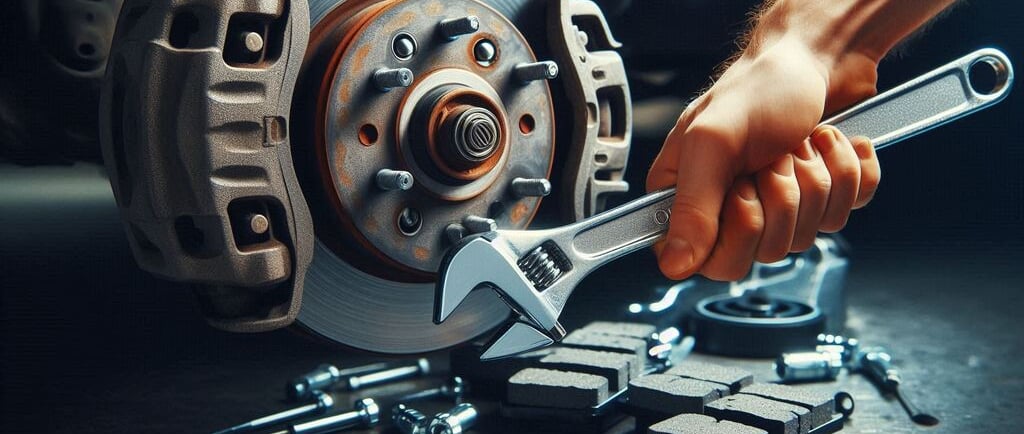Brake Pads and Brake Shoes
When it comes to vehicle safety, one of the most crucial components are the brake pads and brake shoes. These parts play a vital role in ensuring your car stops effectively when you hit the brakes.
BRAKING SYSTEMS
11/13/20244 min read


Brake Pads and Brake Shoes: Understanding the Key Differences and Importance for Your Vehicle
When it comes to vehicle safety, one of the most crucial components are the brake pads and brake shoes. These parts play a vital role in ensuring your car stops effectively when you hit the brakes. Though they serve the same purpose of slowing and stopping your vehicle, brake pads and brake shoes are quite different in design and application. Understanding the differences between them can help you make informed decisions about maintenance and repairs.
What Are Brake Pads?
Brake pads are part of the disc brake system found in most modern vehicles. They sit on either side of the brake rotor, which is a flat, metal disc attached to the wheel. When you press the brake pedal, hydraulic pressure forces the brake pads against the rotor, creating friction that slows down the wheel.
Types of Brake Pads
Organic Brake Pads
Made from materials like rubber, carbon, and glass, organic brake pads are quieter and more affordable but tend to wear down faster than other types.
Semi-Metallic Brake Pads
These pads contain metal particles, such as steel, which increases their durability and performance. They are often used in performance vehicles but can be noisier.
Ceramic Brake Pads
Ceramic pads are known for their longevity and quiet operation. They are often more expensive but offer superior performance and are ideal for everyday driving.
Why Brake Pads Matter
Brake pads are essential for the safety and performance of your vehicle. They ensure that the friction required to stop the vehicle is applied consistently and effectively. Over time, brake pads wear down due to the friction and heat generated during braking. Regular maintenance is key to ensuring they remain in top condition.
What Are Brake Shoes?
On the other hand, brake shoes are typically used in drum brake systems, which are found in older vehicles or on the rear wheels of some modern cars. Brake shoes are curved components that press against the inside of a brake drum, creating the friction needed to slow the wheel.
How Brake Shoes Work
When you press the brake pedal, hydraulic pressure forces the brake shoes outward, causing them to make contact with the brake drum. This creates friction, which slows down the rotation of the wheel. The design of brake shoes is slightly different from brake pads, as they need to fit snugly into a circular drum rather than pressing flat against a rotor.
Types of Brake Shoes
Standard Brake Shoes
These are the most common and provide reliable performance for everyday driving. They are made from a mix of materials like asbestos or non-asbestos organic compounds.
Premium Brake Shoes
Designed for high-performance vehicles, premium brake shoes are often made from more durable materials such as carbon or metallic compounds to withstand extreme heat and pressure.
Adjustable Brake Shoes
These shoes have an adjustable feature, ensuring that they maintain the proper distance from the brake drum as they wear down, providing consistent braking performance over time.
Brake Pads vs Brake Shoes: Key Differences
Though both brake pads and brake shoes are essential for vehicle braking, they have distinct differences. Here’s a quick comparison to help clarify:
FeatureBrake PadsBrake ShoesLocationAttached to the disc brake system (on the wheel hub)Used in the drum brake system (often on rear wheels)DesignFlat, designed to clamp onto the brake rotorCurved, designed to press against the brake drumMaterialVaries (organic, semi-metallic, ceramic)Typically organic, metallic, or carbon compoundsPerformanceQuieter, efficient at heat dissipationEffective for gradual, less aggressive brakingMaintenanceRequires replacement when worn downUsually adjusted or replaced when worn
While both play essential roles, the type of braking system your vehicle uses will determine whether you need brake pads or brake shoes. For most modern vehicles, brake pads are the standard, but older vehicles may still rely on brake shoes.
When to Replace Brake Pads and Brake Shoes
Over time, both brake pads and brake shoes will wear down and need replacing. Here's how to tell when it's time to replace them:
Signs You Need to Replace Brake Pads:
Squeaking or Squealing Noise: This is often a sign that the brake pads are worn down and need replacing.
Vibration or Pulsation: If you feel vibration when pressing the brake pedal, it could be a sign of unevenly worn brake pads or rotors.
Reduced Stopping Power: If you notice longer stopping distances, it might be time for new pads.
Signs You Need to Replace Brake Shoes:
Grinding Noise: If you hear a grinding noise, it's likely that the brake shoes have worn down completely, and the metal parts are scraping against the drum.
Poor Braking Performance: If your braking feels less responsive or less effective, worn brake shoes could be to blame.
Increased Pedal Pressure: A soft or hard-to-press brake pedal could indicate that your brake shoes are worn or need adjustment.
Maintenance Tips:
Regularly inspect your brake pads and brake shoes for wear.
Have your brakes checked by a professional every 12,000 miles or once a year.
Listen for any unusual sounds like squeaking or grinding, as these are early indicators of worn brake components.
Conclusion: Keep Your Brakes in Top Shape
Your vehicle’s braking system is critical to your safety on the road, and understanding the difference between brake pads and brake shoes is key to ensuring optimal performance. Whether your vehicle uses disc brakes or drum brakes, regular maintenance and timely replacement of these components will keep you driving safely.
If you're unsure about the condition of your brake pads or brake shoes, it’s always a good idea to consult with a professional mechanic. Regular brake inspections can save you from costly repairs and help ensure your brakes perform at their best.



